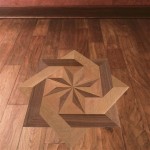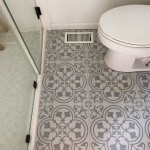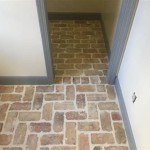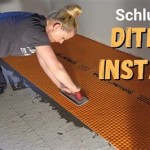How to Remove Carpet Glue From Floorboards
Removing carpet glue from floorboards can be a challenging task, but it is achievable with the right tools and techniques. Carpet glue, also known as adhesive, is designed to be durable and long-lasting, making it difficult to remove without causing damage to the floorboards. However, with patience and the right approach, you can successfully remove the glue and restore your floorboards to their former glory.
The first step is to identify the type of glue used for the carpet installation. This can be determined by observing the glue’s texture, color, and thickness. Knowing the type of glue will inform the best approach to removing it. Once you’ve determined the type of glue, you can choose the appropriate method and tools to effectively remove it from your floorboards.
1. Manual Removal Techniques
For some glue types, especially those that are thinner or have a more pliable texture, manual removal techniques can be effective. The following techniques can be employed:
-
Scraping:
A scraper tool, such as a putty knife or a paint scraper, can be used to gently scrape off the glue. Begin by scraping the glue in small sections, working in the direction of the wood grain to minimize the risk of damaging the floorboards. -
Chiseling:
For thicker glue layers, a chisel can be utilized to remove the glue. However, care must be taken to avoid damaging the floorboards. -
Sanding:
Sandpaper or a sanding block can be used to remove the glue. Start with a coarser grit sandpaper and gradually work your way to a finer grit to achieve a smooth finish.
While these manual methods offer a simple approach, they may not be suitable for all glue types and can be time-consuming and laborious, especially for large areas. It’s essential to use caution and avoid applying excessive force to prevent damage to the floorboards.
2. Chemical Removal Methods
Chemical removal methods involve using solvents or glue removers designed to break down the adhesive bond. These methods are typically more effective for tougher glues and can be used on various types of floorboards. However, it’s crucial to choose the right solvent and to follow the instructions carefully to prevent damage to the floorboards or your health.
-
Solvent-Based Glue Remover:
Solvent-based glue removers are widely available and often contain chemicals like acetone or methylene chloride. These solvents can effectively dissolve most types of glue. Before applying a solvent-based glue remover, it’s crucial to test it on a small, inconspicuous area of the floorboards to ensure it does not damage the finish. Apply the solvent according to the manufacturer's instructions, allowing the solution to penetrate the glue and soften it. -
Citrus-Based Glue Remover:
These glue removers offer a more eco-friendly alternative to solvent-based removers. They are formulated with citrus extracts, which can effectively dissolve glue without the harsh chemicals. However, citrus-based removers may not be as effective against all types of glue and may require more time to work. -
Heat Gun:
Applying heat from a heat gun can soften the glue, making it easier to remove. Be cautious when using a heat gun as it can damage the floorboards if the heat is applied excessively. Use a heat gun on a low setting and move it slowly over the glue to avoid overheating the wood.
After applying a chemical remover, allow it to sit for the designated time, and then remove the softened glue using a scraper or putty knife. You may need to repeat the application process several times for stubborn glue residues. Once the glue is removed, clean the floorboards thoroughly with a damp cloth to remove any remaining residue.
3. Other Considerations
After removing the glue, consider the condition of the floorboards. They may require sanding to smooth out any rough areas and restoration to restore their original shine. If the floorboards have been damaged, you may need to replace them or repair them using a specialized wood filler. It’s also essential to wear appropriate safety gear, including gloves and a mask, when working with glue remover chemicals.
Removing carpet glue from floorboards can be a lengthy process, but with the right approach and tools, you can achieve satisfactory results. Consider the type of glue, the extent of the glue residue, and the condition of your floorboards before choosing the most appropriate removal method. Remember to always follow the manufacturer’s instructions and prioritize safety precautions to avoid any injuries or damage to your floorboards.

Flooring How Can I Remove Carpet Adhesive From Hardwood Floors Home Improvement Stack Exchange

Removing Glue Or Adhesive From Hardwood Floors The Speckled Goat

How To Remove Carpet Glue From Wood Concrete Floors Ultimate Diy Guide

Removing Glue Or Adhesive From Hardwood Floors The Speckled Goat

How To Remove Carpet Glue From Hardwood Floors Servicewhale

Yn Homesweetvictoria Easy Carpet Glue Removal For Hardwood Floors

Hg Floor Glue Remover

How To Remove Carpet Glue Goo Gone

Removing Carpet Glue Off Wood With Cooking Oil I Tried It And Let Soak For About 10 Minutes Did All Of This In A Half Hour No Harsh Chemicals

How To Remove Glue From Wood Floors Pete S
See Also







